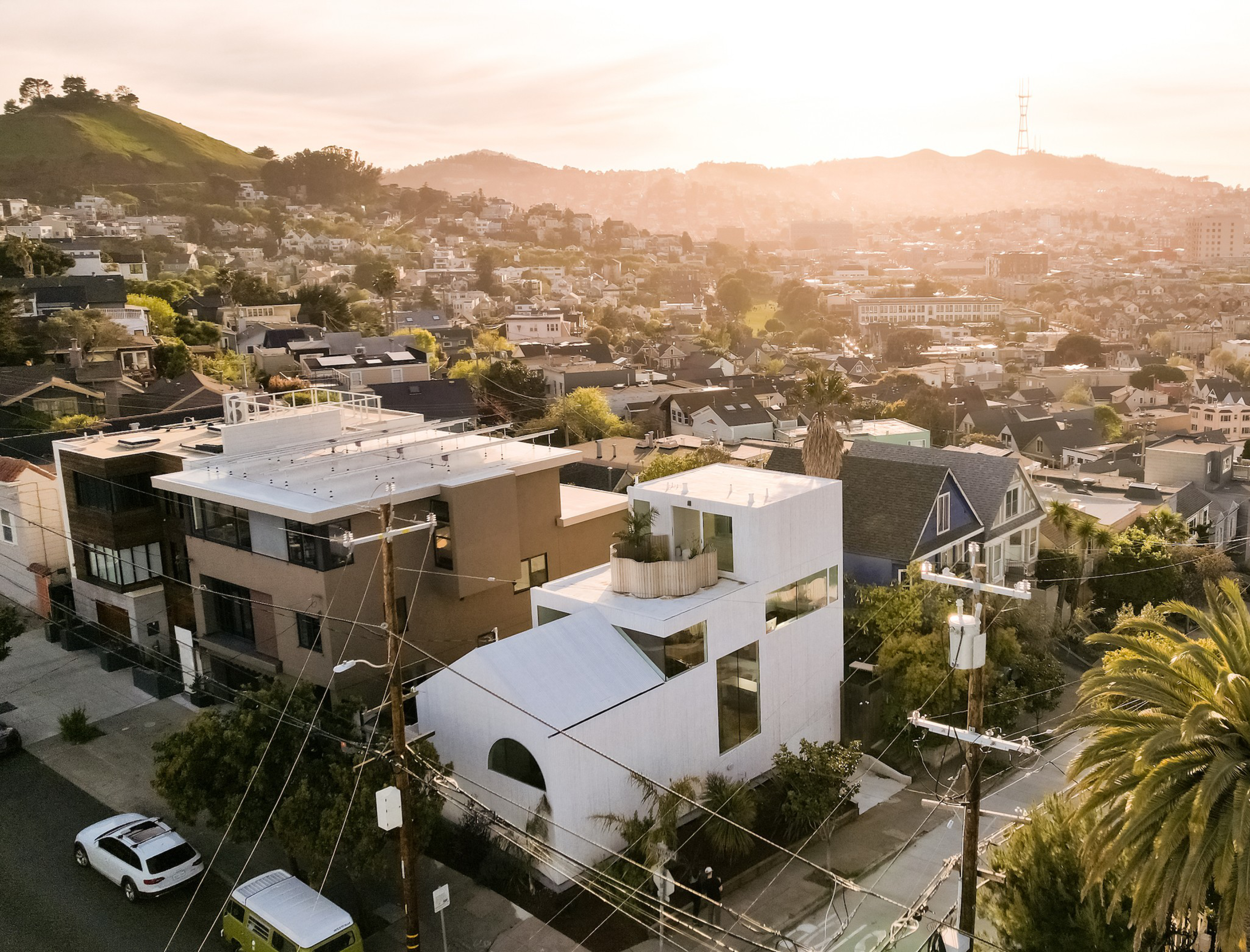Welcome to The Looker, a new column about design and style from San Francisco Standard editor-at-large Erin Feher.
The corner of York and Montcalm has geschichte. That’s the German term for a winding narrative or rich history, hinting at both the lives of its immigrant inhabitants and the surrounding topography.
The Dali-esque intersection near the peak of Bernal Heights presents more choices than just left, right or straight. The streets vary from narrow to wide, stick straight to sinuous, with microclimates shifting alongside elevations.
It’s hard to imagine how anyone would huff up here for groceries, but from as early as 1895 until the mid-20th century, that’s just what hardy Bernal dwellers would do. Even today, elder neighbors fondly recall picking up fresh bottles of milk from the small corner grocery store run by German immigrants. The simple, symmetrical pitched-roof structure—a triangle plopped atop a square—looked like a small child’s artistic rendering of “house.”


Yet it didn’t become an actual house until later. Once the German grocers moved on, a rotating cast of couples occupied the drafty open space, each trading architectural conveniences like interior walls and doors for a chunk of quirky square footage with 360-degree views of the city and the bay. But the story usually ended the same: the couples were joined by a dog, then a baby, and in short order, they would decamp for more conventional quarters.
It took another pair of German immigrants, Stefanie Wenk and Markus Spiering, to break the cycle. When the duo moved into the space in 2012, they found that, at some point during the past century, someone had tacked a skinny two-story tower on the back of the building, creating a vertical maze of rooms and compact crawl spaces.
Instead of stairs, you had to scale a ladder to get to the third floor. But they loved their little house on a hilltop, and they never once considered settling closer to Spiering’s tech job in the South Bay. “We came from Berlin,” he said. “We cannot live in the suburbs.”
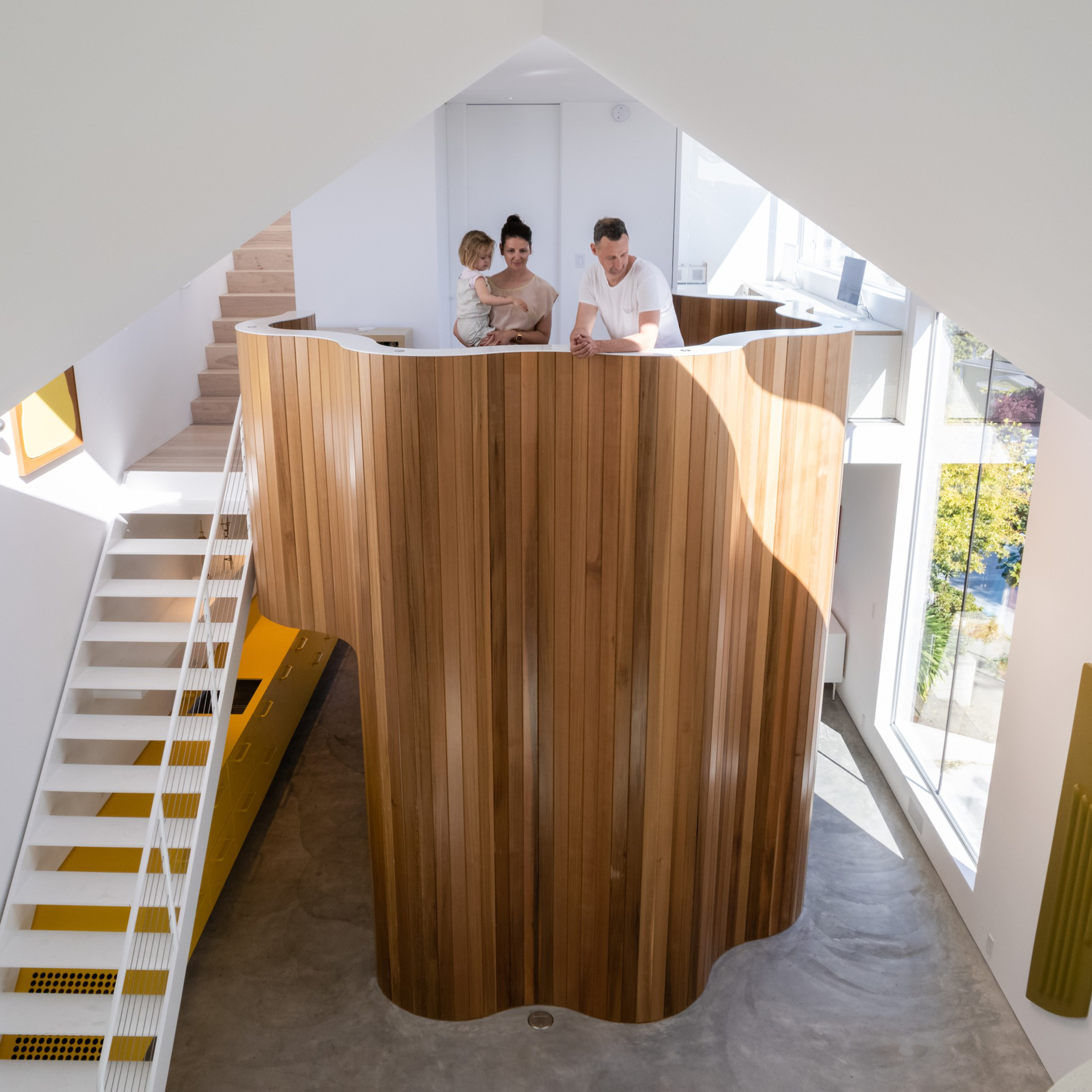
| Source: Courtesy Darren Bradley
Spiering had studied architecture and Wenk worked in the arts, so they couldn’t help but dream up ways to reconfigure the strange little structure. Spiering would sketch out his ideas, posting them to his public Flickr account (opens in new tab)for fun. It was through this vintage version of social media that the sketches made their way to Craig Steely (opens in new tab), a San Francisco architect who had already designed a cluster of creative houses in Bernal Heights. “We clicked immediately,” said Spiering. “We liked all the same little things—we even had the same favorite record player.”
The couple and the architect set to work reimagining the building. Spiering and Wenk’s directives were simple yet unorthodox. They wanted the interiors to feel positive, to spark good moods upon entering. And most importantly, they didn’t want to make the modest structure any bigger—in fact, there was some extra awkward square footage they wouldn’t mind shaving off.
A flower grows in Bernal
Steely, who splits his time between Hawaii and San Francisco, can rattle off a laundry list of reasons he loves working in the city, but complex topographies are near the top. Specifically, he has a soft spot for the wonky, goat trails-turned-neighborhood streets of Bernal Heights. Wenk and Spiering’s hillside bodega abode basically blacked out his design bingo card.
The designer also has a kink for the German expressionist architect Friedensreich Hundertwasser of Austria’s psychedelic apartment complex, the Hundertwasserhaus. For this project, Steely riffed on the architect’s Five Skins philosophy (opens in new tab) to design a concept Steely describes as “a house within a house within a house.”
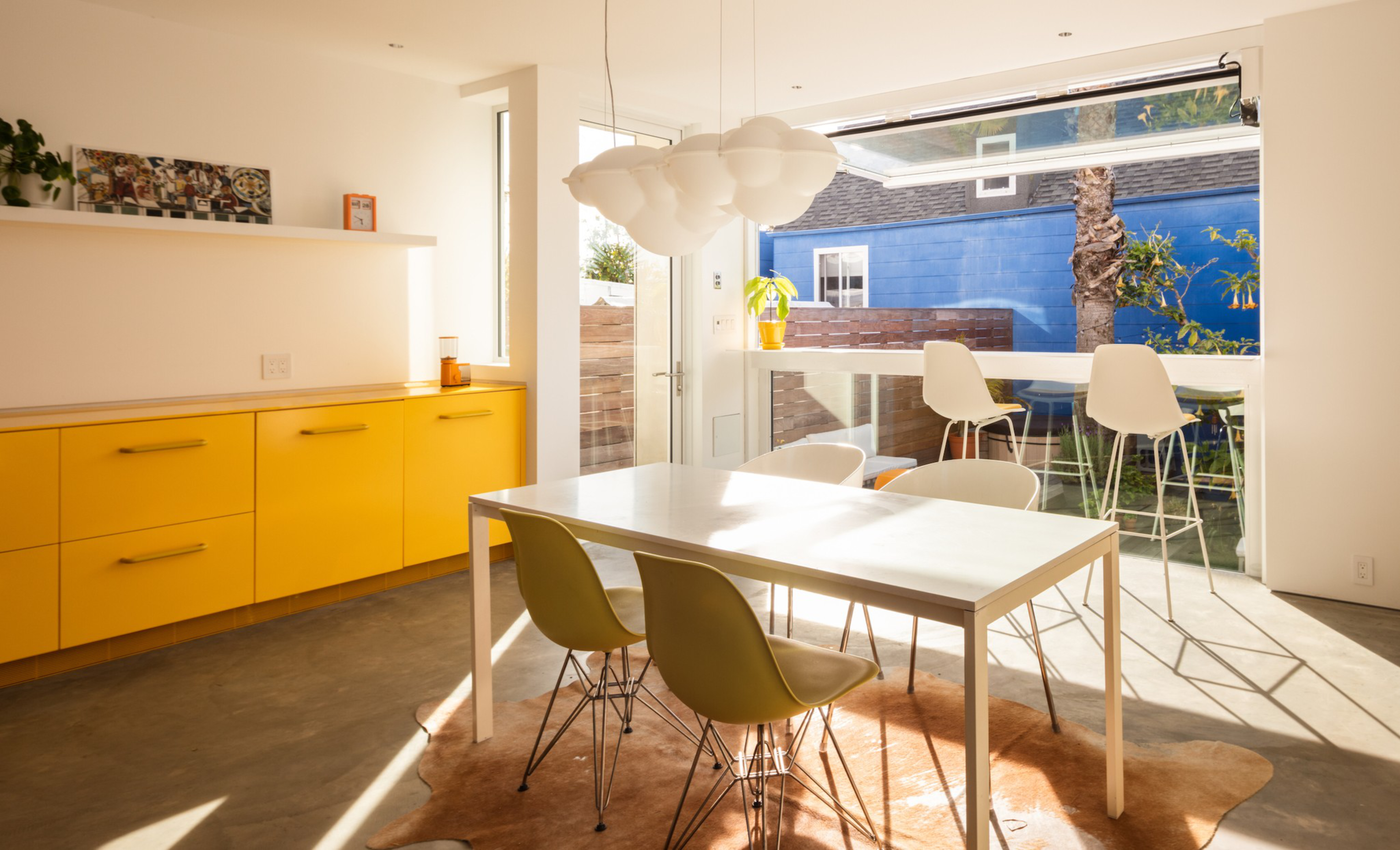
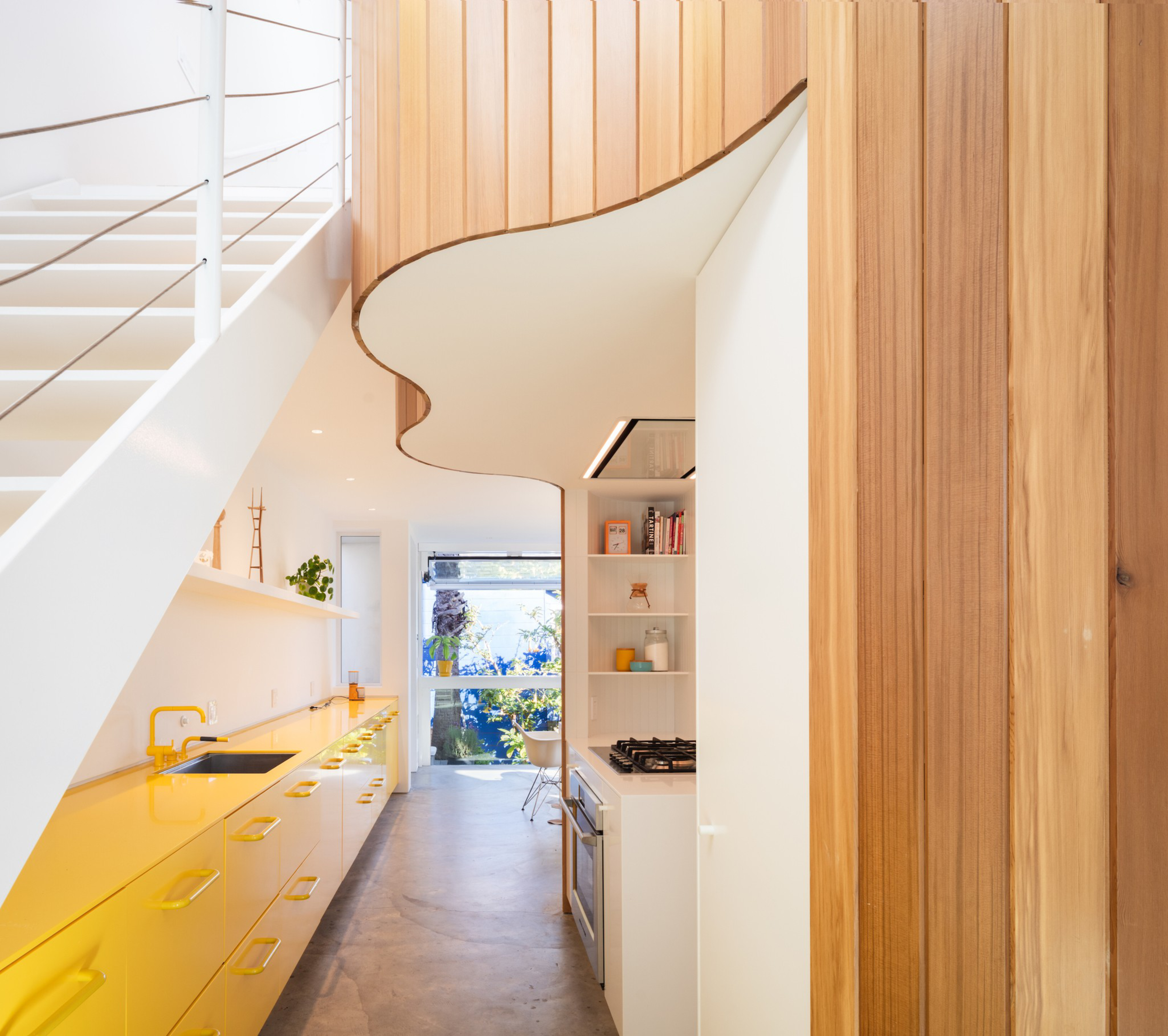
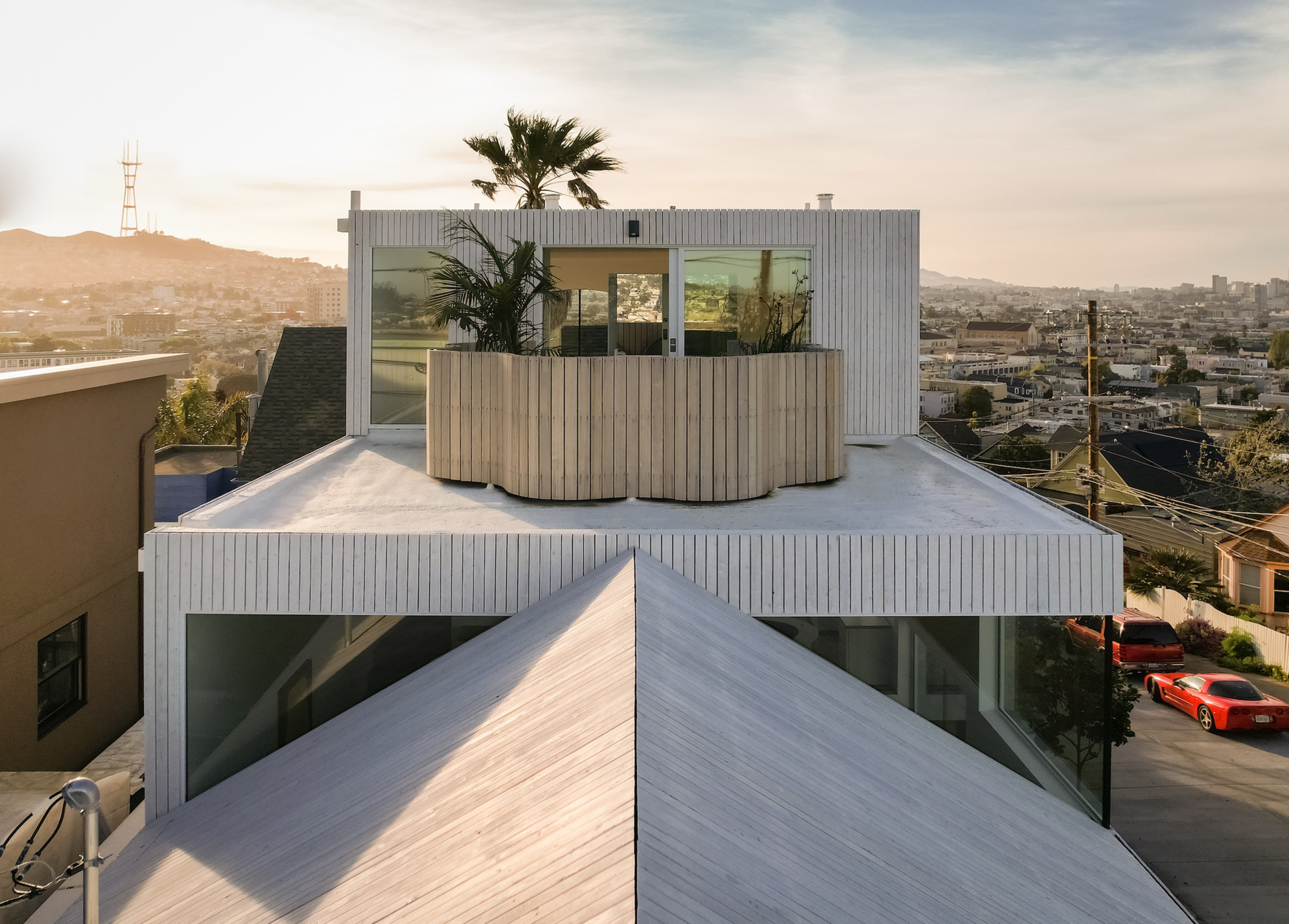
The design simmered, unbuilt, over many years while the couple concentrated on work, then had a baby. But the original design only got better with time —“like a Japanese curry,” said Steely. In 2020, when COVID shifted the pace of life and the couple learned another baby was on the way, it was finally time to bid farewell to the old corner store.
The interior was gutted and the ancient foundation repaired, but the footprint of the house didn’t change. Neither did the original size: it still clocks in at just over 1,500 square feet. “There is a terrible tendency in San Francisco to tear down these tiny unique houses and build monster homes, but we were all really against that,” said Steely.
Instead, they went big elsewhere. The dramatic reveal during the renovation was when 12-foot-wide circles were sliced into the fresh new walls, setting the stage for the massive, moon-like windows that would come to define the house.
The spirit and shape of the tower remained, but from within it, Steely designed a cedar-clad “flower” that grows up from the ground floor and creates a central shape from which all the other living spaces sprout. A hidden door takes you inside the stem, revealing a playful, wavy-walled wet room. On top of the flower is a perch to lounge, take in the views, or, in its current incarnation, sweat it out on a Peloton and try not to trip over the kids’ toys.
The San Francisco-based art and design collective Studio Ahead (opens in new tab)helped select the art and furnishings for the main living space, where the oversized pieces—a sofa that stretches nearly the length of the room and a globe light over three feet in diameter—hold their own in the triple-height space.

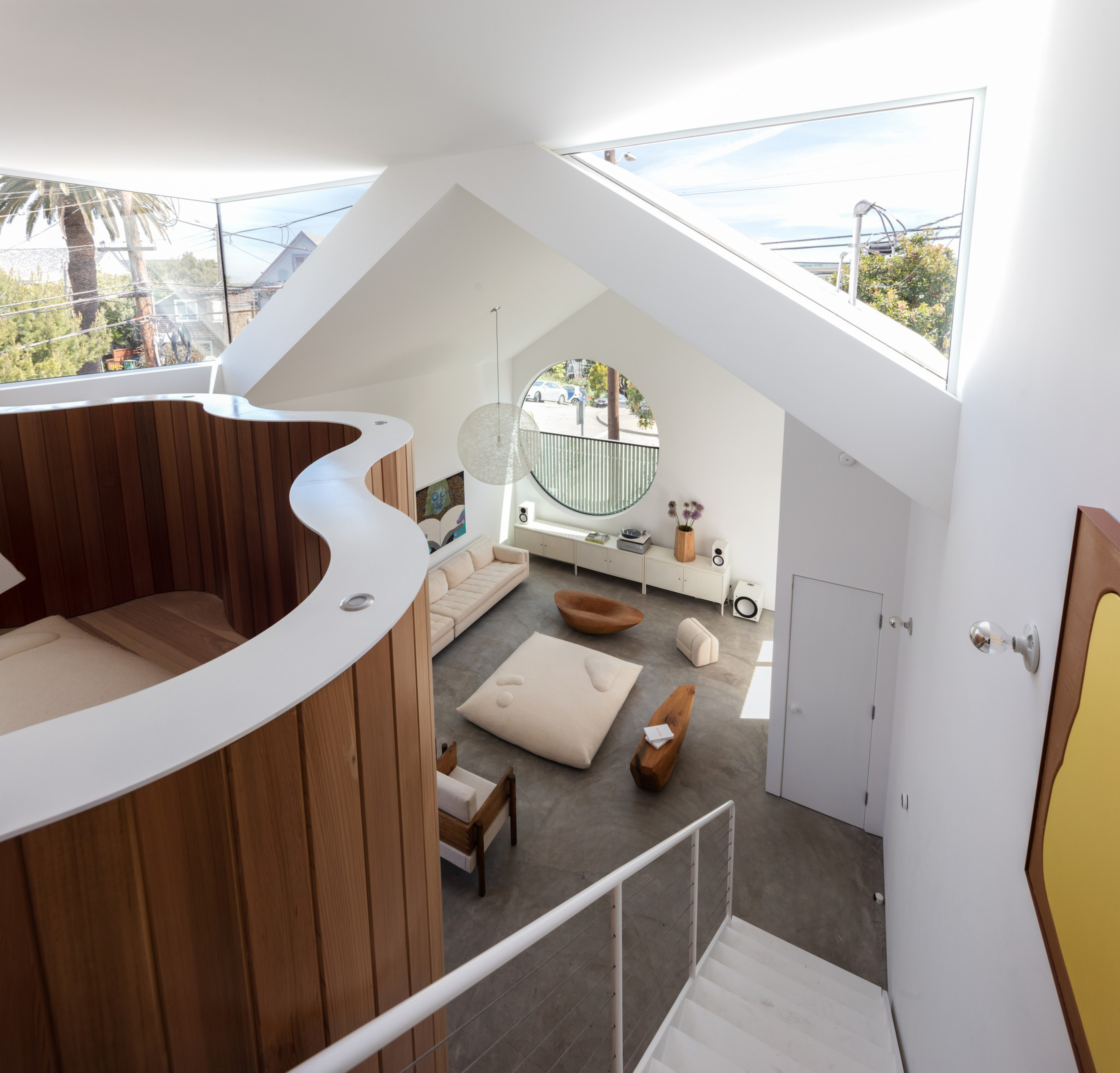
| Source: Courtesy Darren Bradley
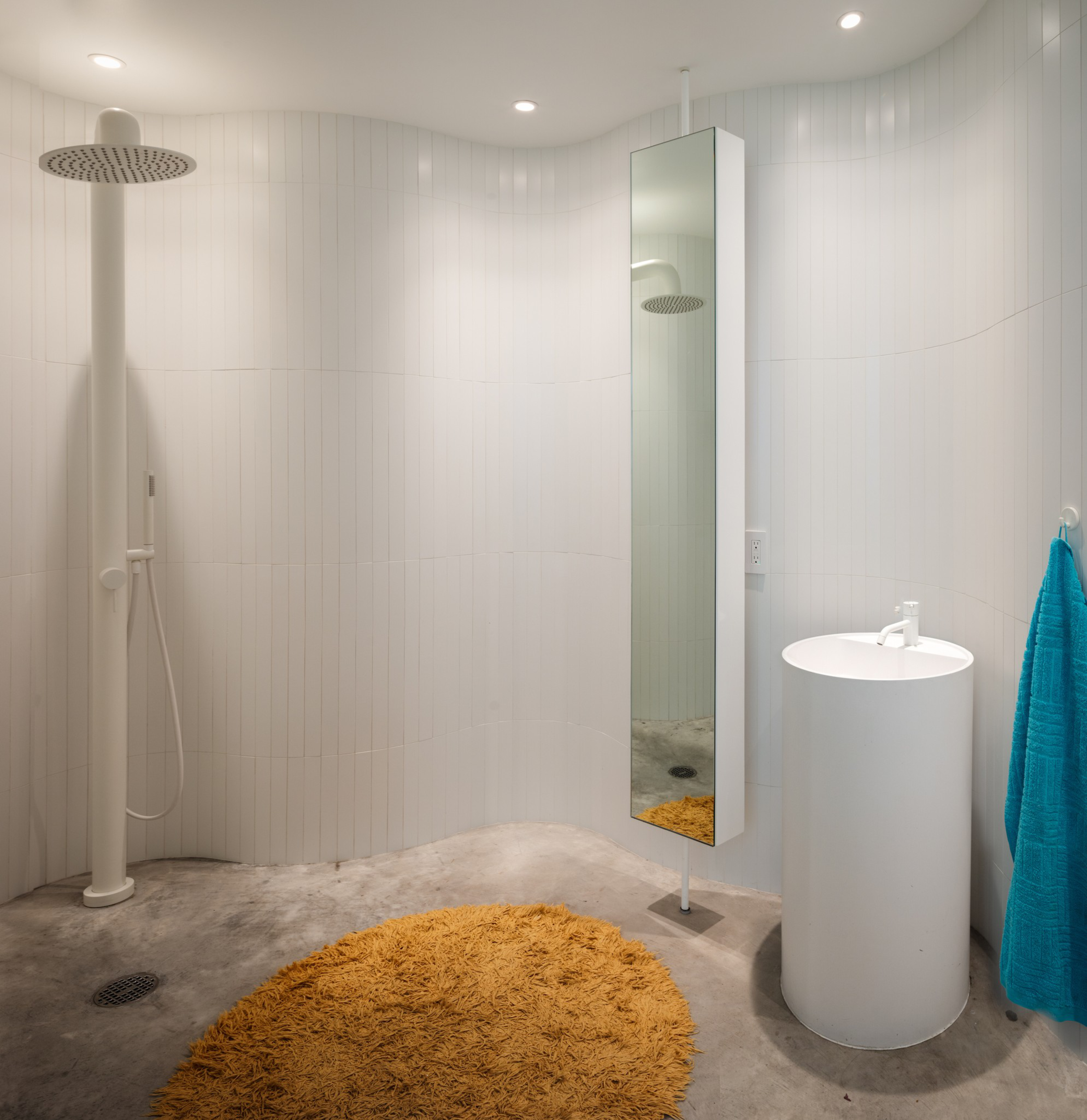
Wenk and Spiering’s bedroom is on the third floor, where the bed faces the top half of the massive circular aperture. A petit second bath is partially walled off by the custom headboard, and open to a roof deck that is encircled by the same undulating shape as the interior flower tower. The building has already germinated some creative offshoots: San Francisco rapper Larry June recently spent the afternoon here shooting a video for the song “Without You (opens in new tab).”
Looking out from their bedroom window, the couple speak glowingly of their neighbors, pointing out a nearby block hung with colorful bunting banners and string lights, where the entire neighborhood gathers every Sunday evening for music, dancing and drinks.
While the corner no longer serves as a waystation for weary hillclimbers to stock up on milk, it’s still known as a hub, where neighbors can drop by and enjoy a beverage or two. A few pieces of stray gold confetti are still stuck atop the massive, lunary pendant in the living room—mementos of a raucous New Year’s Eve party.
It seems that the curse of the itinerant couples on York and Montcalm has officially been lifted, and the newly christened Flower House will become an enduring part of the location’s geschichte. “This is our forever home,” says Wenk. “We aren’t going anywhere.”
